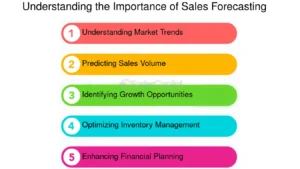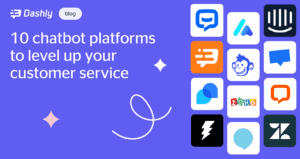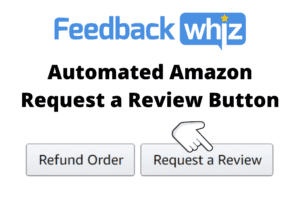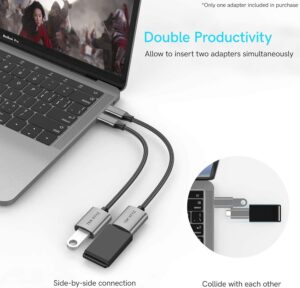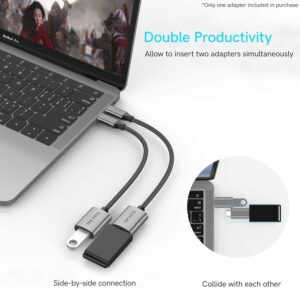Unlocking the Power of Customer Data for Your Sales Strategy
Customer data is the driving force behind today’s successful sales strategies. Understanding and utilizing customer data effectively allows businesses to gain deeper insights into customer behavior, personalize marketing efforts, and optimize sales processes. In this article, we will explore how businesses can harness the power of customer data to drive sales growth and success.
Sales teams can no longer rely solely on instincts or experience. Instead, they need to make data-driven decisions to stay competitive in an ever-evolving marketplace. Customer data, when utilized correctly, can provide valuable insights into buyer preferences, habits, and trends, allowing businesses to anticipate customer needs and deliver personalized experiences.
Why Customer Data is Essential for Sales
Customer data can improve nearly every aspect of the sales process. From prospecting to closing deals, data enables businesses to target the right leads, nurture relationships, and ultimately convert more customers.
Key Benefits of Using Customer Data:
- Enhanced Lead Generation: Use data to identify high-quality leads based on customer profiles, behaviors, and previous interactions.
- Improved Customer Retention: Personalized interactions based on customer history can increase loyalty and retention.
- Better Sales Forecasting: Data provides insights into future trends and helps sales teams predict outcomes more accurately.
- Increased Personalization: Data enables personalized communication, ensuring that customers receive offers and messages tailored to their unique needs and preferences.
Types of Customer Data
There are several types of customer data that can be gathered, and each type provides unique insights that contribute to a more comprehensive understanding of the customer journey.
1. Demographic Data
This data includes essential information such as age, gender, income, education level, and geographic location. Demographic data helps businesses segment their audience and tailor marketing efforts accordingly.
2. Behavioral Data
Behavioral data captures customer interactions with your business, such as website visits, email engagement, purchase history, and product usage. This type of data reveals patterns that can inform sales strategies and personalize customer outreach.
3. Psychographic Data
Psychographic data digs deeper into customer values, interests, and lifestyle choices. Understanding what motivates your customers can help businesses create emotional connections and build lasting relationships.
4. Transactional Data
Transactional data refers to customers’ purchase history, including order amounts, frequency of purchases, and payment methods. This data can be used to analyze buying patterns and predict future sales opportunities.
5. Firmographic Data
For B2B companies, firmographic data provides information about a business customer, including company size, industry, and revenue. This data helps businesses target the right accounts and tailor sales efforts to specific industry needs.
How to Collect and Manage Customer Data
Effectively gathering and managing customer data is crucial for making data-driven sales decisions. Here are the best ways to collect and organize customer data:
1. CRM Systems
Customer Relationship Management (CRM) systems are essential for storing and managing customer data. CRM platforms like HubSpot, Salesforce, and Pipedrive centralize customer information, allowing sales teams to track interactions and manage relationships effectively.
2. Surveys and Feedback Forms
Surveys, polls, and feedback forms allow businesses to gather direct insights from customers. This data can provide invaluable feedback about customer satisfaction, preferences, and areas for improvement.
3. Website Analytics Tools
Tools like Google Analytics provide critical information about website visitors, such as how they found your site, which pages they visited, and how long they stayed. This data helps businesses understand customer behavior and refine their digital strategies.
4. Email Marketing Software
Email marketing platforms like Mailchimp and ActiveCampaign collect data about how customers interact with your emails, including open rates, click-through rates, and conversion rates. This data can be used to tailor future email campaigns and improve engagement.
5. Sales Team Input
Your sales team interacts directly with customers, so it’s essential to capture their insights. A simple way to do this is by regularly updating the CRM with notes on customer conversations and preferences.
Leveraging Customer Data to Boost Sales
Once you’ve collected and organized customer data, the next step is leveraging that information to improve your sales efforts. Here’s how:
1. Personalized Outreach
Use customer data to tailor your communication and marketing efforts. Personalized emails, product recommendations, and follow-ups based on customer preferences and behavior will improve engagement and increase conversion rates.
2. Lead Scoring
Assign scores to leads based on their behavior and demographic data. By identifying which leads are more likely to convert, your sales team can prioritize outreach and focus their efforts on high-quality opportunities.
3. Cross-Selling and Upselling
Analyze customer purchase data to identify opportunities for cross-selling and upselling. For example, if a customer has purchased a specific product, your team can recommend complementary products or premium versions.
4. Customer Segmentation
Segment your customer base into groups based on common characteristics such as demographics, behavior, or buying patterns. This allows you to deliver targeted messages to specific segments, improving engagement and driving conversions.
5. Predictive Analytics
Leverage predictive analytics to forecast customer behavior and sales trends. By analyzing past behavior, businesses can predict which customers are likely to make repeat purchases or churn, enabling proactive outreach.
Top Tools for Managing Customer Data
Investing in the right tools is essential to efficiently gather, store, and analyze customer data. Here are some of the best tools to consider:
1. HubSpot CRM
HubSpot CRM offers a comprehensive platform for managing customer data, tracking sales activity, and providing personalized outreach. It integrates seamlessly with other tools and offers robust reporting features.
2. Salesforce
Salesforce is one of the most popular CRMs in the world, providing a full suite of features for managing customer data. With advanced AI-powered insights, it helps sales teams make data-driven decisions.
3. Pipedrive
Pipedrive’s visual pipeline management and easy-to-use interface make it a great option for small to medium-sized businesses. It offers features for lead scoring, sales automation, and customer data management.
4. Zoho CRM
Zoho CRM is a powerful tool for collecting and managing customer data. It offers features like lead tracking, real-time reporting, and workflow automation to streamline the sales process.
5. ActiveCampaign
ActiveCampaign is an email marketing platform that integrates CRM functionality, allowing businesses to track customer interactions, manage relationships, and personalize their marketing efforts.
Conclusion: Maximize Sales with Smart Customer Data Usage
In today’s competitive marketplace, businesses that can effectively gather, manage, and utilize customer data will gain a significant advantage. By leveraging customer data, you can personalize your outreach, predict future trends, and ultimately close more deals. The key is to invest in the right tools, such as HubSpot, Salesforce, or Pipedrive, and use them to make data-driven decisions that enhance your sales strategy.
FAQs
What is customer data?
Customer data is information collected about your customers, including demographics, behaviors, transactions, and interactions with your business. It’s used to understand customer preferences and optimize sales strategies.
Why is customer data important for sales?
Customer data provides valuable insights into customer behavior, preferences, and trends. By leveraging this information, businesses can personalize their sales efforts, predict outcomes, and improve the overall sales process.
How can I use customer data to improve my sales strategy?
You can use customer data to segment your audience, personalize outreach, forecast sales trends, and identify cross-selling and upselling opportunities.
What tools are best for managing customer data?
Popular tools for managing customer data include HubSpot CRM, Salesforce, Pipedrive, Zoho CRM, and ActiveCampaign. These tools allow businesses to track, store, and analyze customer data effectively.
How does customer segmentation help improve sales?
Customer segmentation allows you to divide your audience into groups based on shared characteristics, enabling you to deliver targeted, personalized messages that resonate with specific segments of your customer base.
Top Tools to Simplify and Scale Your Customer Data Management
- HubSpot CRM: A user-friendly CRM platform that offers data tracking, lead management, and personalized outreach to enhance your sales efforts.
- Salesforce: An AI-powered CRM that provides advanced data insights and predictive analytics for better sales decisions.
- Pipedrive: A visual CRM designed for small to medium-sized businesses, offering tools for managing customer data and sales pipelines.
- Zoho CRM: A robust platform for collecting and managing customer data, with workflow automation and reporting features.
- ActiveCampaign: Combines CRM and email marketing features to help businesses track customer interactions and personalize their sales outreach.
Keywords: customer data, CRM tools, sales strategy, data-driven decisions, customer insights, personalized outreach, lead management




